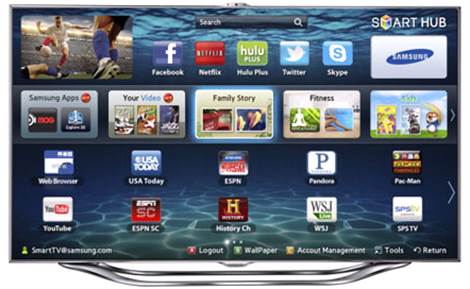Although all three types of 3D display
technology active shutter 3D glasses, passive 3D glasses and no glasses haven’t
been perfect yet, each type has some unique interesting features.
It is nearly three years since the first 3D
TV appeared and TV using this technology is becoming more familiar to many
families. Currently, the consuming market has three types of 3D display
technology which are dominant and used by the TV producers: the type of screen
with active shutter 3D glasses is first used in the 3D entertainment industry.
Then, the type of screen viewed with passive 3D glasses and no glasses have
appeared recently. Although all three of these displays are not perfect, each
has its unique appealing features to the different users.

Active
shutter 3D TV Samsung UA55ES8000
The following is an overview of
performance, comfort and usability of each type:
Performance
A 3D TV has to provide strong depth
performance without the ghost shadows or interference phenomena. The two types
of screens with active and passive shutter currently have greater depth than
the screen without glasses. Meanwhile, the passive shutter and glasses-free TVs
have no undue interference compared with several active shutter TVs that still
have the ghost shadows.

The
passive shutter 3D TV LG 55LM8600
Another important factor is that if the
light around in your viewing room is stronger than the screen brightness. The
glasses-free 3D TVs are superior in this respect because they do not use the 3D
glasses with tinted lenses. The passive 3D TVs are also better than the active
"shutter" glasses that hinder the half of brightness.
It seems that the passive 3D TV is the best
because of its picture quality, except for one noticeable point is that when
watching the 3D contents on the TV screen with the close distance, the viewers
can see the jagged contours or the black lines around.
Active shutter
·
Strengths: Strong depth; sharp images
·
Weaknesses: Slightly glossy; reduce the half of
refresh rate of the TV screen; the darker images than the passive 3D TV
·
Evaluation: good
Passive shutter
·
Strengths: Strong depth; sharp images; images
are brighter than the active shutter TV
·
Weaknesses: Jagged contours and black stripes
when watching 3D movies at a close distance
·
Evaluation: good
Glasses-free
·
Strengths: No ghost shadows; the brightest
images; excellent accuracy
·
Weaknesses: Less depth; the 3D objects behind
are more blurred; 720p is the effective resolution in the 3D mode.
·
Evaluation: medium
Comfort and usability
It is unnecessary to wear heavy and rugged
glasses. The glasses-free 3D TVs bring the most natural and comfortable 3D
viewing experience. This technology has a small limit is that it must be
adjusted to optimize the 3D effect on the screen, depending on the seating
position of each user.

Glass-free
3D TV Toshiba 55RZ1
The passive 3D glasses are also more
lightweight although the types of active shutter glasses are just a bit
heavier. However, the passive glasses are limited in the viewing angles.
Meanwhile, the same active shutter glasses are common darker when tilted 90
degrees and the images may be flickered in the light room. In addition, the
batteries of these glasses need to be replaced or recharged regularly.
Active shutter
·
Strengths: Very wide viewing angle
·
Weaknesses: Slightly flickering; heavier 3D
glasses; frequent charging batteries of the glasses
·
Evaluation: medium
Passive shutter
·
Strengths: No flickering; the lightest 3D
glasses; the glasses without using the batteries
·
Weaknesses: Limited horizontal film viewing
angle
·
Evaluation: good
Glasses-free
·
Strengths: See the most natural 3D
·
Weaknesses: Only support maximum of 9 viewers
·
Evaluation: good
Currently, the 3D
TVs with active shutter or passive glasses are probably the more reasonable
options for most users. Most active shutter 3D TVs offer the better picture
quality in the dark rooms. Meanwhile, the passive 3D glasses with equally
powerful 3D images; only one thing is that the images are not good when sitting
close to the screen. For the performance, the glasses- free 3D screens are more
attractive, but this technology is still relatively new compared to the two
remaining competitors.